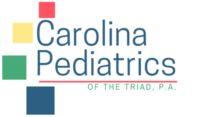Parent Resources
Cheerleading (Care of the Young Athlete)
View spanish version, share, or print this article.
Cheerleading is often thought of as a sport only
for high school and college athletes. However, it is becoming more popular among
younger athletes as well.
Cheerleading shares many of the same types of
injuries seen in other jumping sports. However, the risk of injury can be
reduced. The following is information from the American Academy of Pediatrics
about how to prevent cheerleading injuries. Also included is an overview of
common cheerleading injuries.
Injury prevention and safety tips
-
Equipment. The American
Association of Cheerleading Coaches & Administrators (AACCA)
recommends using mats or a soft, even surface when learning new skills
as well as during competition. -
Fitness. Athletes should
maintain a good fitness level during the season and off-season.
Preseason training should allow time for general conditioning and
sport-specific conditioning. Also important are proper warm-up and
cool-down exercises. -
Coaches. It is important
for coaches to be experienced and familiar with the rules. Cheerleaders
are less likely to be injured if their coach has completed a coaching
class such as from the AACCA Safety Course; has more than 1 year of
coaching experience; and has a college degree. All coaches should be
familiar with the National Federation of High Schools guidelines, which
include restrictions on basket tosses, pyramid heights, and
twisting/flipping stunts. -
Spotters. All cheerleaders
should be trained to spot properly. Spotters assist or catch the top
person in a partner stunt or pyramid. Proper supervision and spotting
should be available at all times. -
Emergency plan. Teams
should develop and practice an emergency plan so that team members know
their roles in emergency situations. The plan would include first aid
and emergency contact instructions. All members of the team should
receive a written copy each season. Parents also should be familiar with
the plan and review it with their children.
Common injuries
Ankle sprains
Ankle sprains are the most common
cheerleading injury and usually happen when the cheerleader lands on the
outside of the foot, twisting the ankle inward. Injuries to the bone are
more common than injuries to the ligament, especially in younger
athletes.
Treatment begins with rest, ice,
compression, and elevation (RICE). Athletes should see a doctor as soon as
possible if they cannot walk on the injured ankle or have severe pain,
especially in the bony parts of the foot or ankle. X-rays are often
needed.
Knee injuries
Knee injuries commonly occur when a
cheerleader lands awkwardly from a jump. An anterior cruciate ligament tear
is usually associated with sudden knee pain and giving way from a twisting,
knock-kneed, or hyperextension injury.
Treatment begins with RICE. Athletes should
see a doctor as soon as possible if they cannot walk on the injured knee.
Knee fractures may not heal if the knee is not treated properly. Athletes
should also see a doctor if the knee is swollen, a pop is felt at the time
of injury, or the knee feels loose or like it will give way.
Cheerleaders can also get overuse knee
injuries, such as patellar tendonitis or Osgood-Schlatter disease, which are
common in sports that require a lot of jumping. They usually cause pain just
below the kneecap. These injuries can be treated with rest, ice, taping or
bracing, stretching, strengthening, and/or physical therapy.
Wrist injuries
Wrist injuries usually happen when a
cheerleader falls onto an outstretched hand. Both bone and ligament injuries
in the wrist can occur with a fall.
Treatment begins with RICE. Athletes should
see a doctor if their wrists are swollen or painful the next day. X-rays are
often needed.
Low-back pain
Spondylolysis, a stress fracture in the
spine, is a common injury in athletes who do a lot of jumping, tumbling, and
back-bending activities. Symptoms include low-back pain that feels worse
with back extension activities, like back walkovers or back handsprings.
Cheerleaders with low- back pain for longer than 2 weeks should see a
doctor. X-rays are usually normal at first so other tests are often needed
to diagnose spondylolysis.
Athletes with spondylolysis must rest from
back extension activities for several weeks, and usually months. Physical
therapy to strengthen the back and abdominal muscles will also help athletes
recover. Back braces are unnecessary in most cases.
Head injuries
Concussions in cheerleading usually occur
when a cheerleader’s head hits the ground after a severe fall. A
concussion is any injury to the brain that disrupts normal brain function on
a temporary or permanent basis.
The signs and symptoms of a concussion range
from subtle to obvious and usually happen right after the injury but may
take hours to days to show up. Athletes who have had concussions may report
feeling normal before their brain has fully recovery. With most concussions,
the player is
Prematurely returning to play after a
concussion can lead to another concussion or even death. An athlete with a
history of concussion may be more susceptible to another injury than an
athlete with no history of concussion.
concussions should not return to play until they see a
doctor.
Catastrophic injuries
Catastrophic injuries can occur if a
cheerleader falls from the top of a pyramid, lift, or basket toss. Head
injuries, like concussions or skull fractures, and spine injuries, like
fractures or paralysis, may occur after a severe fall. If a severe fall
occurs, the athlete should not be moved and the emergency plan should be
started right away. No athlete with a concussion or spine injury should
return to sports unless it’s cleared in writing by a doctor.
Remember
Cheerleading injuries can be prevented with
proper supervision, spotting, and compliance with the rules and safety
guidelines in place for cheerleading.
Powered by RemedyConnect
disclaimer
Denver Data Feed


